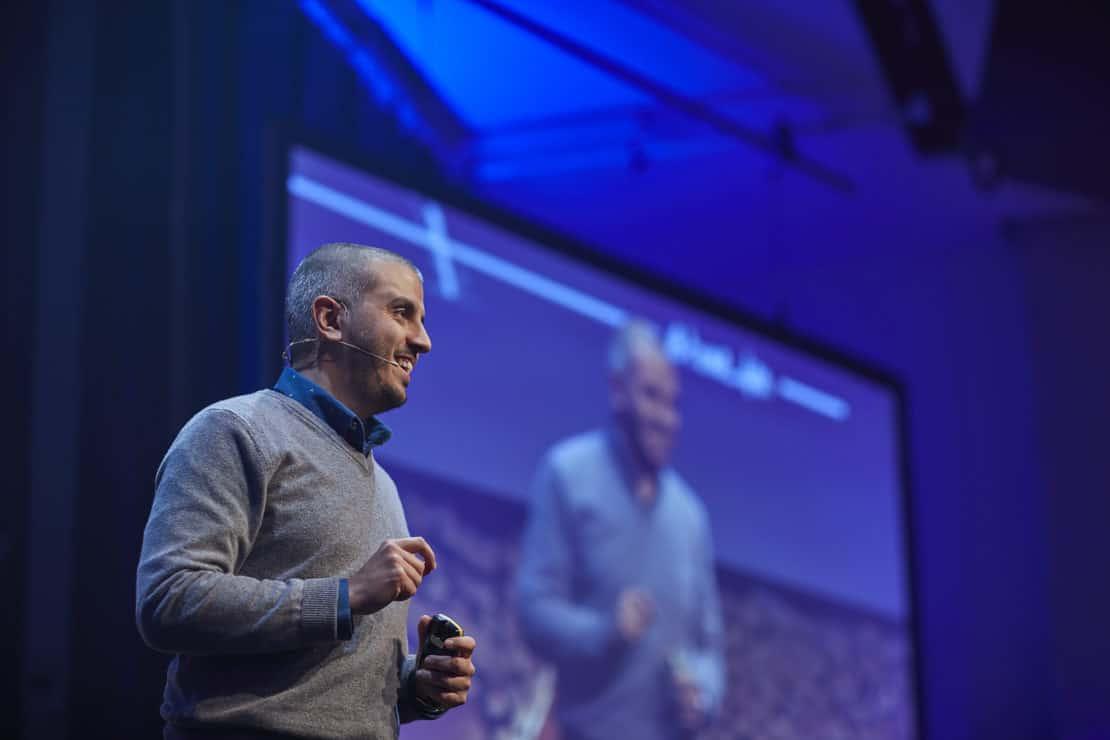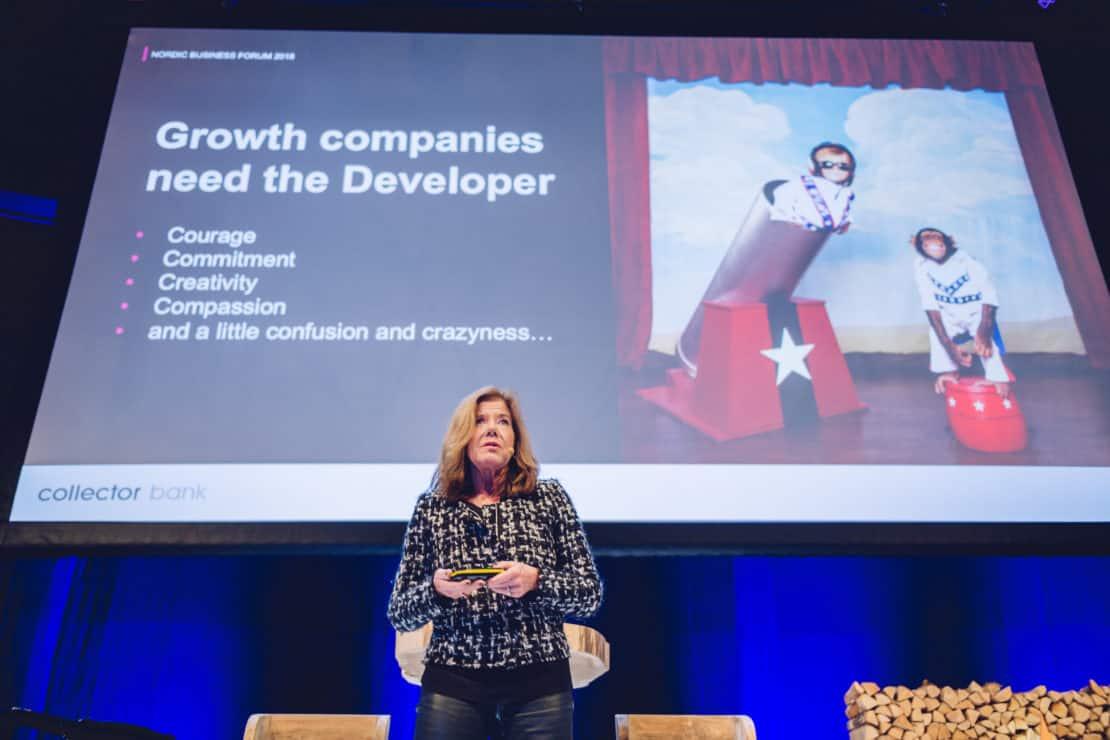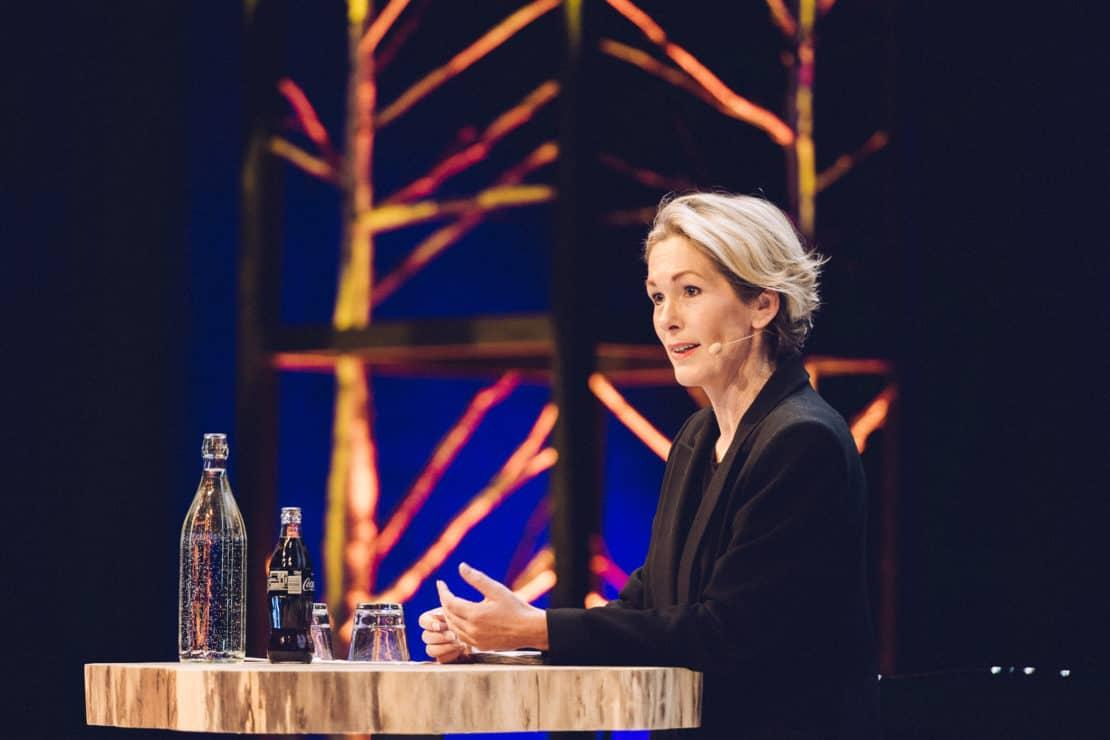26Mar2018
The Corporate Startup author Dan Toma opens his talk at Nordic Business Forum by telling a story of Albert Einstein. While teaching at Princeton, Einstein was asked by an assistant why the test he had just administered had the same questions as the previous year. Einstein said that this was no mistake. The questions may be exactly the same, but the answers are not. The fast pace of change in physics made answers to problems obsolete fairly quickly. This is not far from reality in the world of business. For years, the answer to most problems had been optimization. Now, the answer seems to be innovation.
Toma challenges the audience in attendance to ask two key questions: What does innovation really mean? Is innovation really the answer to all of our problems?
Misunderstanding Innovation
It is certainly true that coming up with great new ideas, doing research, and prototyping are all vital to innovation. However, Toma emphasizes that this is just the first part of the equation. The second part requires the development of a business model to turn new ideas into a profitable business; the full process turns mere invention into innovation. “Otherwise,” Toma quips, “your innovation department is just a cost center”.
Innovation is not dependent on the size of a company’s budget. Especially in today’s business climate, where funding is ubiquitous and easy to come by, many equate the effectiveness of innovation with the budget thrown at it. Toma believes this to be a misguided belief held by many. He points to a graph that illustrates that the amount of sales revenue generated by a sample set of companies had almost no correlation with their R&D budget. In the same way, Toma admits that innovation does need a team but cautions against thinking that throwing more labor at innovation will yield results. He claims that most innovation teams, even at the largest of companies, are only about 9 members strong.
Toma illustrates his next point by citing his consulting career where he is brought in by large and small teams alike to advise them on innovation. These conversations quickly get stuck on the different tools that should be used, but Toma comments that this is wrong because that misses the first step of innovation. At its core, innovation is about knowing where to deploy tools and resources for the best effect – the how is not as important. “It’s like digging for gold,” Toma analogizes. “When you’re digging for gold, striking gold depends more on your ability to understand where you need to dig than on your capacity to dig.”
Design Thinking, Agile, and Lean Startup are trendy innovation solutions, but Toma explains that too much importance is placed on the method, which ultimately sacrifices proper implementation of the tools. A misapplied methodology, however great it may be, can actually do more harm than good to a business. Toma advises companies to be less concerned with the method itself and more focused on the consistent application of its principles.
Companies have a tendency to worry about appearances – what innovation looks like – which is another way of getting stuck in the method. Toma recounts a time when he was advising a financial services firm that thought Casual Thursday was the key to sparking innovation. The company got specific about its wardrobe guidelines, including shoes of a particular brand and black turtlenecks, as if dressing the part would make employees more innovative. Clearly, Toma explains, this misses the point and develops an unhealthy fixation on something that isn’t related to innovation.
Understanding True Innovation
Toma brings the audience back to his initial question; now that we know what innovation is not, we have to figure out what it is. Through a series of provocative questions, he insists that innovation is about building a culture where a well-developed process exists, with employee buy-in, which helps people “understand how to think, not what to think.”
Toma admits that part of his positive offering about innovation comes from venture capital firms. Most of them have an “investment thesis” that clearly lays out the types of projects in which they will invest. This concept, he suggests, would benefit companies looking to invest in innovation. With an innovation thesis, companies and departments alike could have clear and specific objectives and principles that dictate their investment of time and energy in innovation.
To demonstrate this point, Toma cites U.S. President John F. Kennedy who proclaimed that the U.S. would send a person to the moon and back safely by the end of the decade. Toma explains that Kennedy provided a clear description and timeline that defined a picture of success without being specific about the method. He didn’t tell the American people how the feat would be accomplished, but he provided a target at which all innovation efforts were to aim. And because of that, it worked.
It’s impossible to innovate in every sphere – even the biggest companies can’t innovate in every market or on every product. Innovation needs to be deployed strategically. To illustrate this point, Toma cites the examples of Facebook’s 3 Horizons model and Daimler’s Innovation Ambition Matrix. Both companies innovate in purposeful steps; the former looks at the maturity level of products and concepts, while the latter looks at market opportunities and value proposition. For Daimler, innovation becomes about moving from core products like Mercedes Benz and Smart Cars, to services like Car2Go, and eventually to a service like Fling where people rent cars by the minute.
Toma prefers a matrix that combines the two approaches. This way, a company can gauge the maturity of its attempts to venture outside its core business, as well as the distance from its core and its susceptibility to disruption. Toma explains: “basically, you’re not going to be successful if all of your ideas in one corner, or in the opposite.”
Once a company has mapped out its products and services, their levels of maturity, and whether they are core or non-core, it needs a framework or governance. Toma places a heavy emphasis on a framework. Without one, there is no clear way to implement innovation, know where products and services are in their life cycle, and no way to measure the effectiveness of any innovations.
At each stage of a given innovation framework, the business needs to ask a different set of questions. The reason for this is simple, as Toma explains it. The same metrics cannot be compared at two different stages of the innovation process; doing so will lead to the mistaken opinion that innovation isn’t working. That’s part of the reason why so many companies struggle with creating and sustaining a culture of innovation.
Without proper discipline and practice, even the most exorbitant budgets and largest teams will struggle to keep innovation going. Toma explains: “when you create a methodology, create it using the same process that you’re going to ask the people [in your company] to follow.” When that doesn’t happen, innovation rarely gets off the ground – and if it does, it doesn’t gain traction.
Toma encourages a company developing an innovation plan to then use that as a Lean Startup experiment. Like all good similar experiments, it should be customer-centric, where the test customers are your internal people.
A Parting Shot
As Toma closes his keynote, he shows a quote from Russian novelist Fyodor Dostoyevsky, which reads: “All happy families are alike; each unhappy family is unhappy in its own way.”
His contention is that, if a company follows the principles that he has laid out, they’ll be a happy family – similar to other companies that implement the Lean Startup methodology. Those who miss something along the way will be unhappy, but unhappy in their own way.


